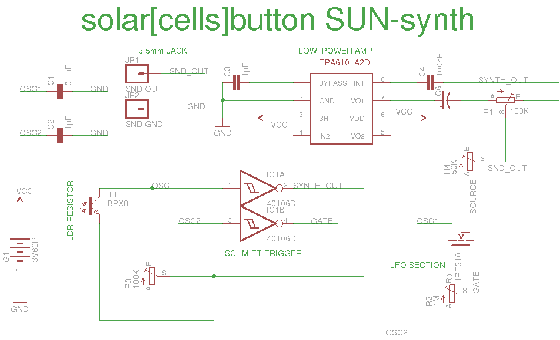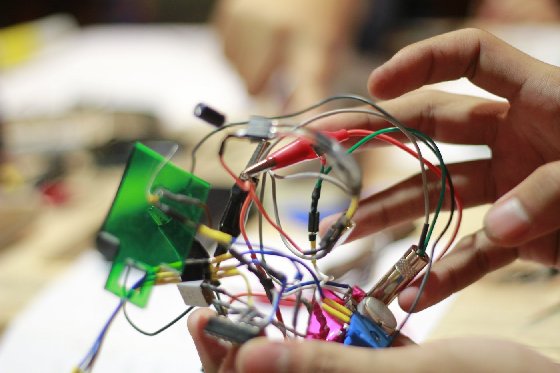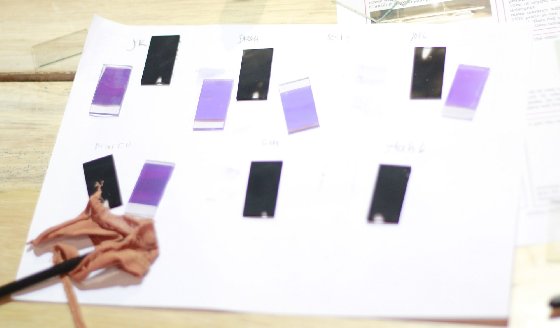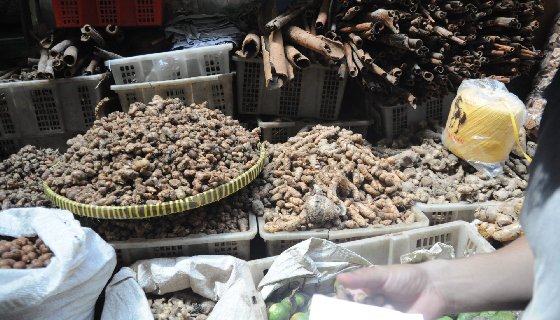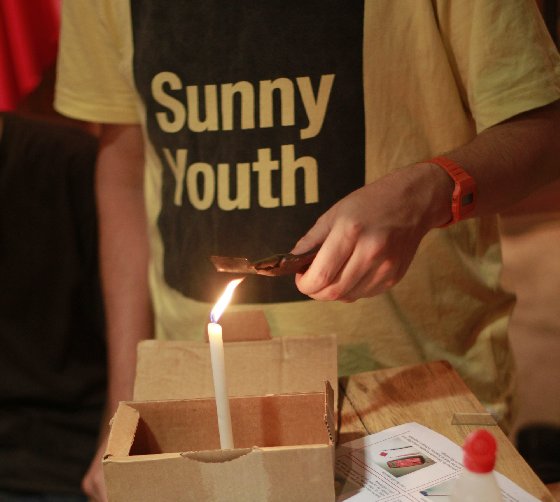moddr_@cellsbutton5
|
The Cellsbutton festival organised by HONF (House of Natural Fiber) took place in Yogyakarta from the 15th to the 21st of July 2011. The festival featured exhibitions, lectures, discussions, workshops; primarily focussing on education. The workshop Solar[Cellsbutton] given by Selena Savic and Gordan Savicic participating as moddr_ lab, was scheduled for the Friday, 22nd of July, in the Gate Store.
The workshop was intended for media artists, wetware activists and professionals who are interested in sustainable energy forms, self-built synthesizers and a good sense of do-it-yourself attitude. It consisted of two parts: Part 1 – Building a light-sensitive synthesizer from scratch Together with participants from Yogyakarta, Bandung, Shanghai and Melbourne we build small DIY synthesizers following a schematic created by moddr_. A simple square wave generator (CMOS Schmitt-trigger 40106 order@farnell) was connected to a LDR (light dependent resistor) and some potentiometers, controlling the frequency of the sound with resistance – it made higher pitched sound when there was less light. Thus, it became an acoustic indicator for the strength of the sun-light and a musical instrument.
The synthesizer was connected to a small low-power amplifier (TPA6101 order@farnell) and it needed less than 3V to work. Download full schematic drawing here:
Part 2 – Building a natural solar cell Creating electricity through the use of organic solar cells is an example of how scientists are trying to alleviate some of the dependence on non-renewable resources. It is the purpose of this activity for participants to see that with a little human ingenuity, other ways to create energy can be attained. Since the production or the import of solarcells in Indonesia is an expensive undertaking, solar harvesting technology hasn’t been widely spread. We were interested in discussion and knowledge-sharing with people and participants about this topic throughout our stay in Yogyakarta.
Before the workshop we prepared some conductive glass ourselves (by melting SnCl2 Stannous Chloride on pieces of broken window glass), and used it together with the industrially produced glass. It’s efficiency was much lower but proper conductive glass is hard to buy in Indonesia and we wanted to be able to produce everything locally.
Within the workshop we were teaching participants how to make solar cells, that convert sunlight by means of photosynthesis into energy. The cells are constructed from the following parts: – 1 piece of conductive glass – Titanium dioxide coating – Hibiscus dye on the TiO2 coating (the electrons from the dye get excited, negatively charging this layer). – 1 piece of conductive glass – Carbon layer (formed from candle fumes) on the other piece. – 1 electrolyte – Betadine between the two pieces; joined together and sealed well. We also gathered some local materials, like kunyit for dye (from a local market in Yogya), and also TiO2 powder, to test how they would work compared to materials we brought with us.
With the participants of the workshop, we covered our DIY conductive glass sheets with TiO2 coating, using the one plate stove, and wrapped in aluminium. Then we put all coated glass sheets in the dye, and left it for about 30 minutes.
We took non-coated conductive glass sheets and covered them with a layer of carbon, holding them over a candle light for about 5 minutes, watching carefully that the glass doesn’t break. When the anode parts were ready (when TiO2 accepted dye well) we washed them in alcohol and then left to dry. The two prepared glass sheets were then put together, a few drops of betadine were placed on the carbon side and ‘sucked in’ the cell with capillar forces.
This cell was sealed with two-component glue and left to dry. The cells were in the end connected together to produce more electricity. The maximum power they gave under a battery light was about 1V. The concept of natural-dye-solar cells has been discovered by Michael Graetzl (read more about the Graetzel cell). More photos are available at moddr_’s fflikkr gallery Thanks to BMUKK Austria, Fonds BKVB and Mondriaan Stichting for supporting this festival and covering our travel costs and workshop materials. |



